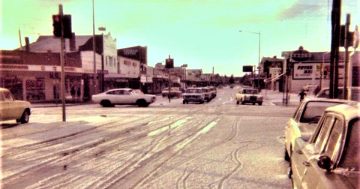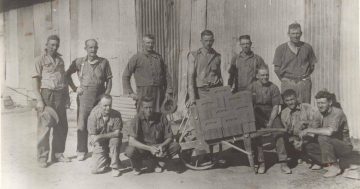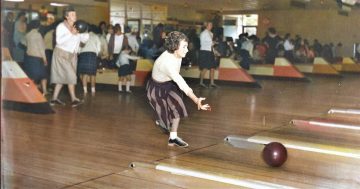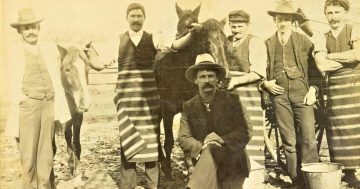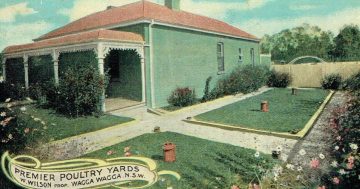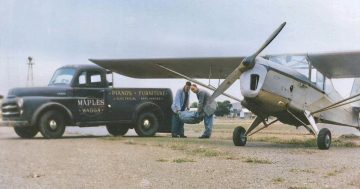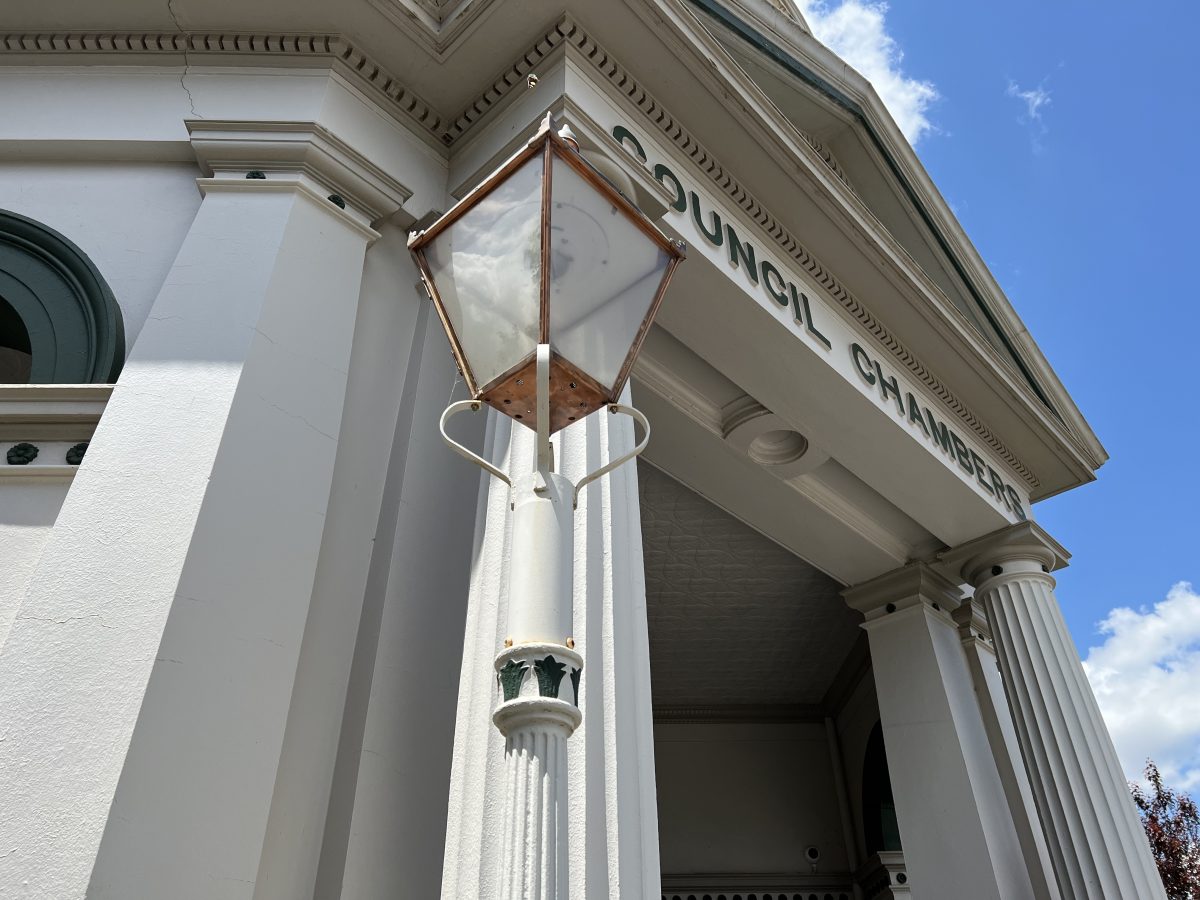
The old gaslights outside the Museum of the Riverina. Photo: Chris Roe.
The term ‘gaslighting’ is a modern expression that describes a form of psychological manipulation, but back-in-the-day it was a wonderful civic innovation.
As you walk past the Historic Council Chambers on the corner of Baylis and Morrow Streets, you may notice the pair of antique street lamps that stand beside the original entrance.
As the plaque on the street declares, they were donated in 1993 by “Bruce and Halina Hedditch, a past Mayor and Mayoress of Wagga Wagga from 1978 to 1982”.
It was a dark start for Wagga in the 1830s before gas lighting was installed on the town’s streets in 1881.
Through the early years of European settlement, residents held back the dark with candles and oil lamps and, after 1876, had the benefit of three kerosene street lamps along Johnston and Tarcutta Streets to light the way to church.
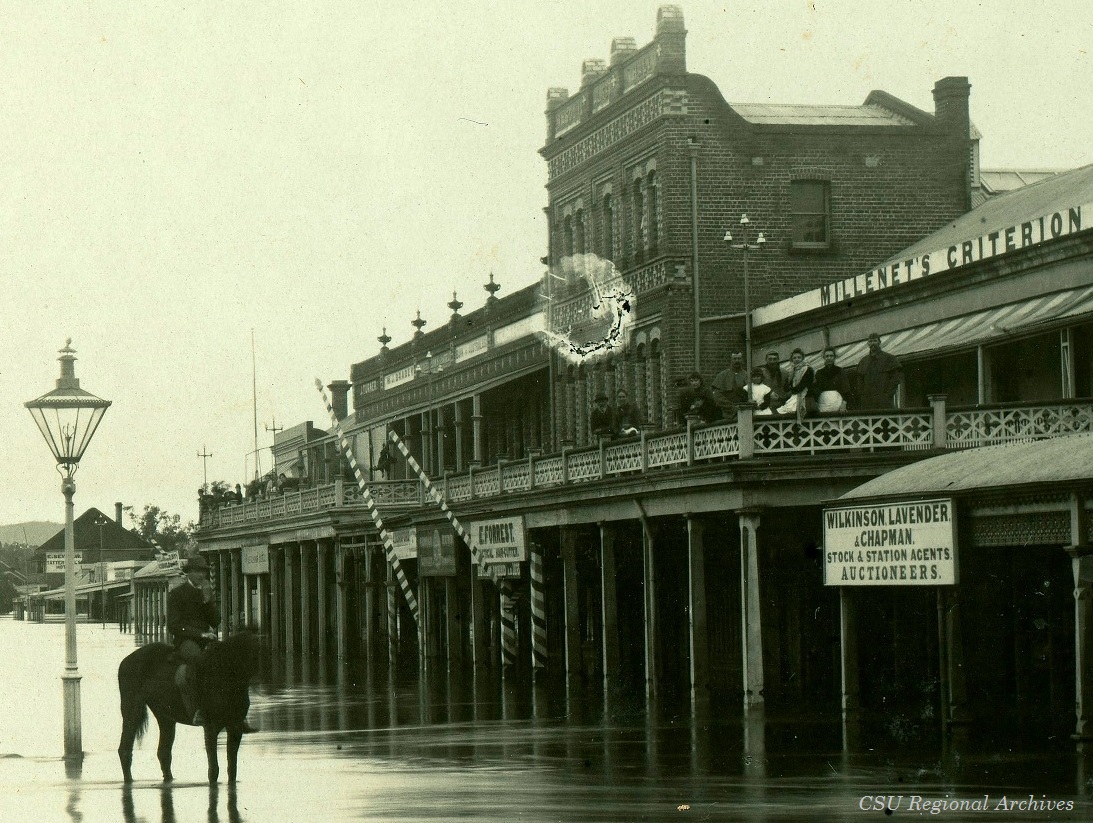
A man sits on his horse beside a gas lamp at the Fitzmaurice Street and Gurwood Street intersection during the 1891 flood. Photo: CSU Regional Archives (Gormly Family Collection).
In March 1874 Forsyth and Company installed their own set of lamps outside their store on Fitzmaurice Street to great public approval.
“The benefit does not stop at the locality of the store and office, for the whole street is lit up and made almost as bright as if illuminated by the brilliant lime-light,” gushed the Wagga Wagga Advertiser.
With increasing enthusiasm for gas lighting, a public meeting tried and failed to raise the funds for a gasworks.
It was a private company operated by the Wark Brothers that eventually got things up and running.
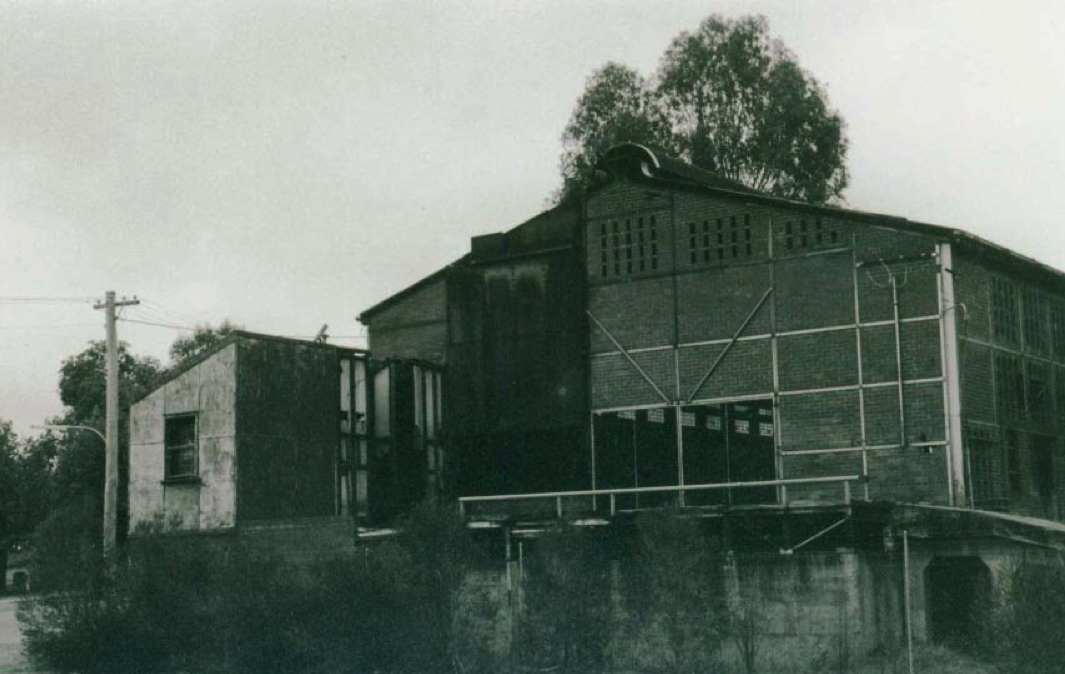
The Wagga Wagga Gasworks on Tarcutta Street. Photo: WWCC.
Mr J. A. Wark bought a paddock by the river on the corner of Tarcutta and Cross Streets where the CSU Riverina Playhouse and carpark sit today, and got to work building Wagga’s first gasworks.
On Saturday, 26 March 1881, a large crowd assembled outside the Commercial Hotel in Fitzmaurice Street to see mayoress Eliza Fitzhardinge light the first lamp to rapturous applause.
Twenty-four street lamps were soon installed across town and a lamplighter was employed to ignite and extinguish them each day.
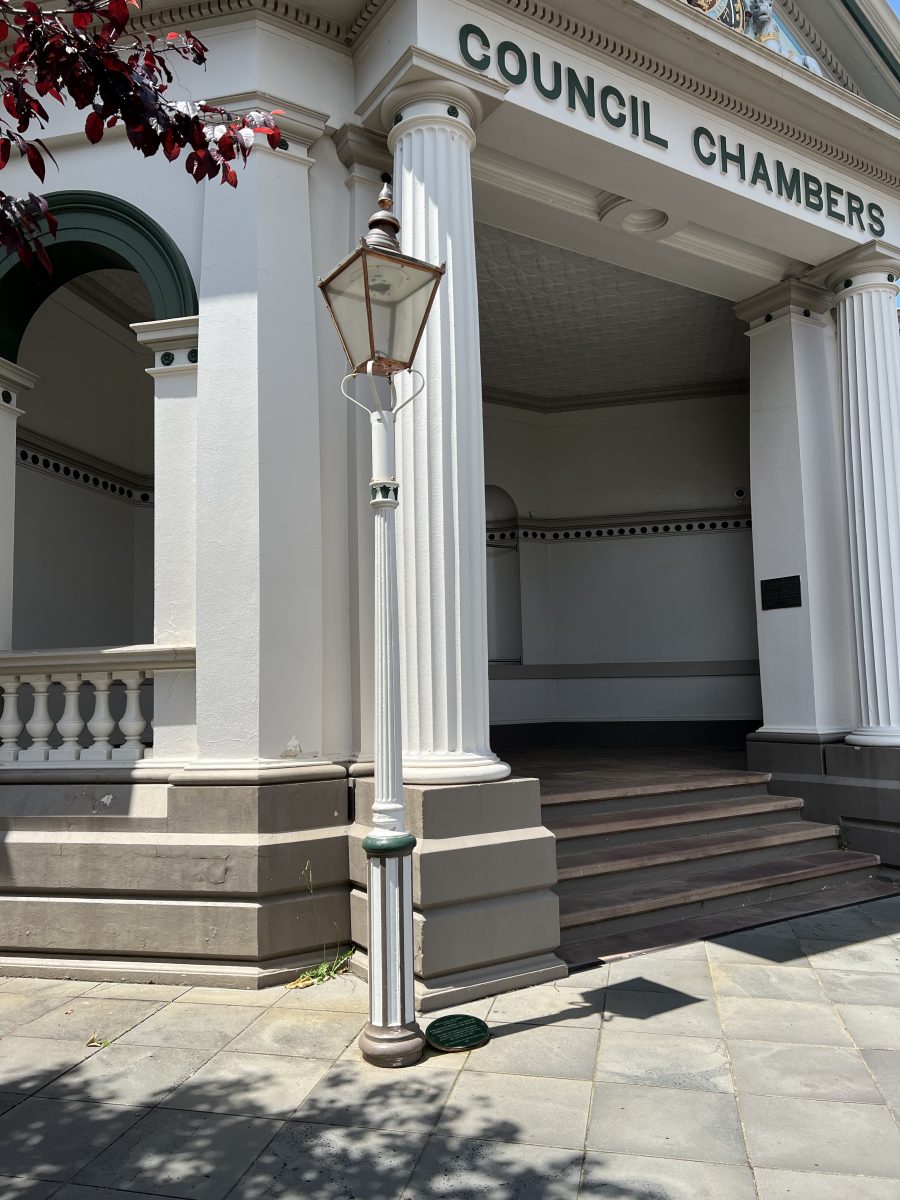
One of two lamps that stand beside the Historic Council Chambers entrance. Photo: Chris Roe.
It was a pretty filthy affair in the early years with waste tar and soot across the site and black smoke pouring from the chimney.
As locals complained about the expensive and poor quality product, council decided to purchase the operation and took possession in February 1888.
Floods proved problematic and the town was left in darkness for days in 1891 before a wall was built around the gasworks, and vandals kept operators busy through the years making repairs to broken glass.
In the early 20th century, discussions began around updating to the latest fad in electric lighting, but it would be another two decades before the switch was flicked on 6 May 1922.
So next time you pass by the iconic Council Chambers, take a look at the old gas streetlamp and spare a thought for the bloke who used to walk the streets to light them!
(Information thanks to Sherry Morris and CSU Regional Archives.)







